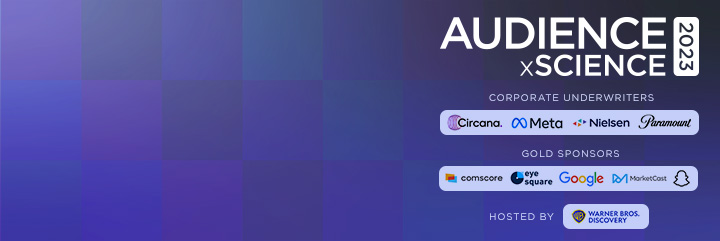- Past Event Highlights
- Article
Going Steady: How Long Will (My Cross-Media Campaign) Last?
Brian Pugh – Chief Information Officer, Comscore
Tania Yuki – CMO & EVP, Digital, Comscore
In this session, Tania Yuki and Brian Pugh of Comscore explored the impact of frequency and latency in cross-platform advertising effectiveness. In her opening, Tania demonstrated consumer trends and touchpoints to better understand cross-media, in terms of reach and optimizing platforms for specific outcomes. In her discussion, Tania acknowledged the challenges of measurement due to the constant introduction of new innovations and the adoption of new behaviors to track. She also recognized the considerable increase in connected devices per household since the pandemic. Tania pointed out complexities in the current media ecosystem from the increase in which media has merged despite being separate platforms (e.g., linear TV, social media, online video, etc.). In addition to all the changing behavior in media consumption, the speaker noted the emergence of Generation Z is beginning to change the rules for establishing brand love and loyalty. In his discussion, Brian examined findings from the measurement of 400 cross-platform campaigns to understand trends in terms of platform mixes. Brian noted the continued growth of social media and CTV along with the decline in linear TV, though he acknowledged linear still remained "king." Furthermore, he found that multi-screen campaigns performed better than single-platform campaigns.
Key Takeaways
- The number of connected devices per household has increased from 9 to 12 since the pandemic, creating a more complex path in which to reach consumers.
- Despite being separate platforms (e.g., linear TV, social media, online video, etc.) media is “inextricably commingled together,” leading to "context switching and about getting the right content to the right consumer."
- In terms of long-form video, "Linear television is still the juggernaut in the room at 205 billion [viewing] hours." Total video across linear, CTV and digital grew 5% year-over-year in the U.S. CTV viewing increased by 14% of the total hours watched.
- Short-form video continues to rise in popularity through Instagram Reels, TikTok and YouTube Shorts. This trend in short-form video consumption is growing in double-digit percentages and redefining video consumption across mobile and connected TV screens.
- The emergence of Generation Z is changing the marketer approach to brand love and establishing loyalty and building long-term value as their consumer behavior is in contrast to previous cohorts. This is specific to their lack of brand loyalty.
- In terms of media consumption, Generation Z are heavy movie watchers (37%), preferring dramas (29%) and cooking shows (23%). Additionally, they expressed interest in local news and documentaries.
- Social media is still growing (11%) but there are fewer linear TV households (-9%) as people are consuming media elsewhere and CTV has increased substantially (32%).
- Though there was a clear decline in linear TV viewership, linear TV remains supreme regarding total viewership for one channel.
- In terms of incremental reach over the length of a campaign, linear TV reached a lot of viewers in the early part of a campaign, but over time the study indicated "reaching incremental people on CTV and digital more often." This finding acknowledged the advantages of a cross-screen campaign in terms of optimizing reach.
- Adding screens in a campaign improved brand lift but the variability of results also increased. Additionally, results for ad recall and other variables followed a similar pattern. It was noted that the optimal platform mix depended on the target audience.




